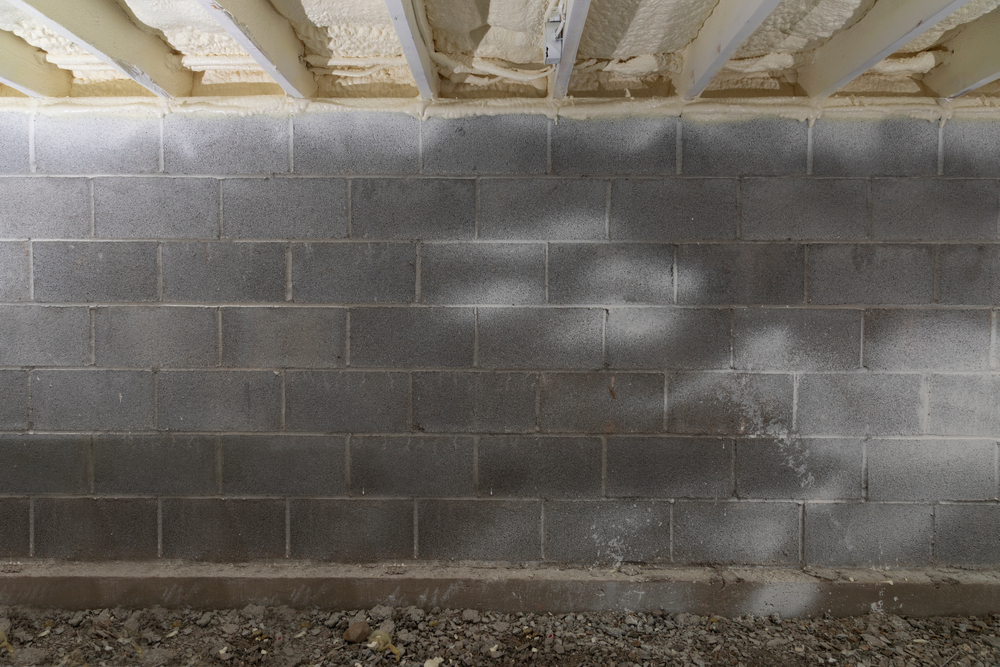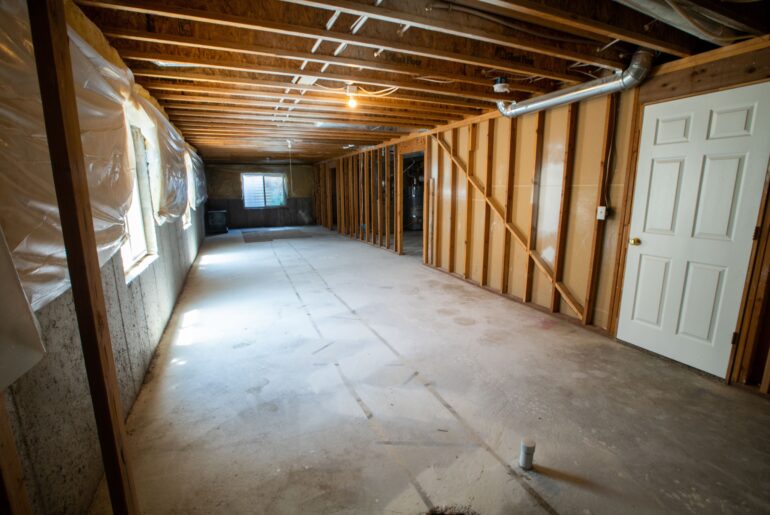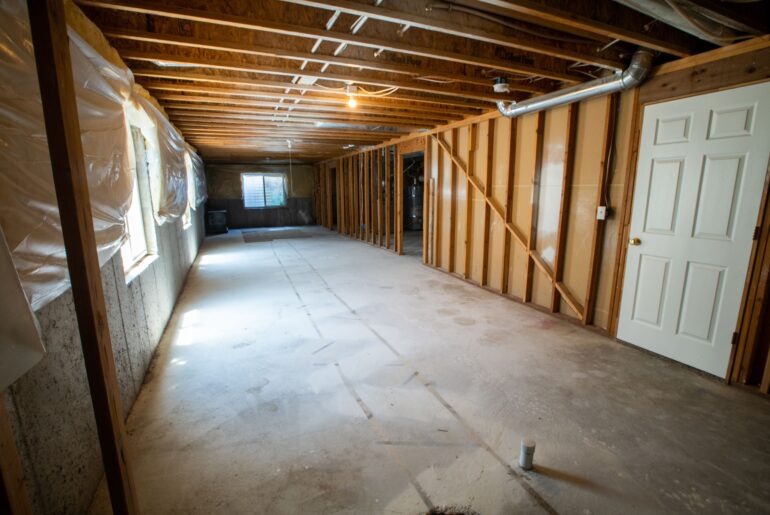Nobody wants water to get in their basement. Waterproofing your basement is as vital as it seems, but how can you effectively keep your basement water-free?
Spray foam is an effective agent for waterproofing your basement in the short term, but it may not be enough if you have any structural issues in your home.
Can you use any kind of spray foam to waterproof your basement? What structural issues can render spray foam ineffective?
Read on for answers to these questions and more as you learn how to waterproof your basement with spray foam.
Why Waterproof Your Basement?
Typically, water in your house is a bad sign. A leak can indicate faulty piping that might develop into further structural issues down the line, especially in your basement.
However, there are other, more immediate issues that waterproofing your basement may fix. These issues range from your typical water damage concerns to financial matters.
Ultimately, three of the best reasons to waterproof your basement are the reduction of moisture levels, the reduction or mitigation of water damage, and the help to save money on energy bills.
Let’s take a closer look at why you should waterproof your basement and how spray foam can help you maintain a safer home environment.
Reducing Your Moisture Levels
High levels of moisture might be good in baked goods, but it is not desirable in a home.
Excessive humidity can make your home feel hotter in the summer and colder in the winter, contribute to mold growth and food or wood rot, and destroy any paper records in your home.
Waterproofing your basement can help you feel more comfortable and keep your possessions safe from mildew by preventing water from entering your basement and evaporating upwards.
Properly Insulate Your Basement
If you’ve been concerned about rising energy bill costs, you may have an issue with faulty insulation.
Spray foam is as much an insulator as it is a waterproofing agent, so waterproofing your basement with spray foam can help you build an insulating layer to keep your warm air in, pollutants out, and your wallet happy.
If you live in an area with high humidity and moisture problems, spray foam may be a great option to insulate your basement while keeping it dry.
Reduce Water Damage
Due to the underground nature of a basement, it is the area of your house most susceptible to water damage.
Subterranean environments often feature high levels of humidity that can rot and decay any organic matter, but this humidity can also congregate as liquid water.
If this liquid water enters your basement, it can cause severe damage to anything present, from sensitive files to your home’s foundation.
However, despite its benefits, spray foam may not be the ideal route to reduce water damage in your home.
Let’s take a closer look at the benefits and pitfalls of spray foam and whether spray foam is a good option for you.
Is Spray Foam A Good Solution To Waterproof Basement?
Spray foam is a good solution to waterproof your basement, but it may not be the best one.
Ultimately, exterior drainage, such as a trench drain and external polymer coats, may be the most effective way to keep water out of your basement.
However, spray foams are an exceptional method for internal waterproofing and insulation. The main issue with spray foam is that the water it blocks still exists; the spray foam is merely holding it back and allowing it to build up without providing a drainage method.
Will Spray Foam Keep Water Out Of The Basement?
Spray foam will keep water out of your basement for a time, especially if you only place spray foam over visible cracks.
However, excessive water may still build up and put pressure on the spray foam, either damaging the spray foam if the pressure builds high enough or growing in mass to the point that it enters through another location.
For the best possible results, consider covering your basement in an even coating of spray foam, such as with insulating measures like fiberglass panels.
Can Water Leak Through Spray Foam?
Excessive levels of humidity might rot through your spray foam, but if you have applied it correctly, it will never leak.
Most spray foams, such as closed-cell polyurethane expanding foams will not let moisture through, which qualifies them as absolute vapor barriers.
What Spray Foam To Use To Waterproof a Basement?
There are many varieties of spray foam available on the consumer market, and it can get confusing to pick just one.
Some varieties of spray foam are better than others. For example, you should always choose a closed-cell polyurethane foam as opposed to polyethylene.
Polyethylene vapor barriers may seal moisture inside your basement, resulting in the moisture damage that you are actively working to avoid.
For ease of use, you may utilize an expanding foam to cover more space in less time. However, you may need to purchase more cans, making expanding foam a costlier option.
How Much Spray Foam Do You Need to Waterproof a Basement
There is no one number of spray foam cans you should buy to waterproof your basement. With different basement sizes come separate amounts of spray foam.
Regardless of how large your basement is, you should aim to coat the walls (and ceiling, if necessary) with a 2-3 inch layer of spray foam.
From a financial perspective, this may cost upwards of $1,500 with larger basements costing up to $6,000 when including labor costs.
If you waterproof your basement yourself, you are limited to material costs, which may be as low as $800.
How to Waterproof Basement With Spray Foam
Now that you know spray foam, you only need to apply that knowledge by applying spray foam.
When it comes to the process of waterproofing your basement, you have two options; do it yourself, or spend some extra money to hire a professional.
If you hire a professional, you don’t need to do anything other than set up a time for them to arrive. However, the process of doing it yourself is more involved.
As with any other project, ensure that you are wearing the proper protective equipment. For spray foam, the PPE includes protective clothing, gloves, a respirator, and full-face protection.
Step 1. Locate Your Leaks And Seams
You must do some preliminary work before getting into the actual spray foam application. First, identify the source of any potential leaks and seams.
You may hire a professional to take care of these before you begin applying spray foam, but if not, keep their locations in mind for later.
As long as it is not actively leaking, you may spray over it; however, you may want to spend more time on sites where issues may arise.
Remember- if water gets behind your spray foam, it can rot the foam and cause damage to your foundation.
Step 2. Identify Structural Issues
Spray foam is an opaque substance. Once you apply spray foam, you will have plenty of difficulties seeing through the other side.
Therefore, you will want to inspect the structure of your basement before applying any spray foam.
If anything seems off or indicates structural damage, postpone your spray foam and have a professional inspect your basement.
Step 3. Apply Spray Foam
If you have cleared your basement of any issues and marked potential leaks, you are ready to apply spray foam. Apply your PPE and get ready to spray.
Apply a spray foam layer of 2-3 inches to the walls and ceiling as needed. You should leave the spray foam to cure for at least an hour, but ideally, you should grant it up to 12 hours for a full and thorough cure.





